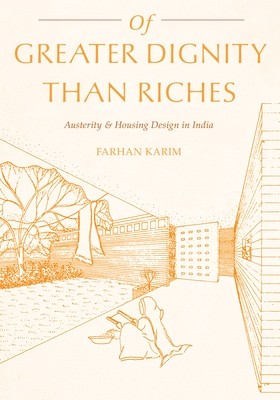
- We will send in 10–14 business days.
- Author: Farhan Karim
- Publisher: University of Pittsburgh Press
- ISBN-10: 0822965690
- ISBN-13: 9780822965695
- Format: 18.3 x 25.7 x 2.8 cm, hardcover
- Language: English
- SAVE -10% with code: EXTRA
Reviews
Description
Extreme poverty, which intensified in India during colonial rule, peaked in the 1920s--after decades of imperialist exploitation, famine, and disease--a time when architects, engineers, and city authorities proposed a new type of housing for India's urban poor and industrial workers. As Farhan Karim argues, economic scarcity became a central inspiration for architectural modernism in the subcontinent.
As India moved from colonial rule to independence, the Indian government, business entities, international NGOs, and intergovernmental agencies took major initiatives to modernize housing conditions and the domestic environment of the state's low-income population. Of Greater Dignity than Riches traces multiple international origins of austerity as an essential ingredient of postcolonial development. By prescribing model villages, communities, and ideal houses for the working class, this project of austerity eventually reduced poverty into a stylized architectural representation. In this rich and original study, Karim explains the postwar and postcolonial history of low-cost housing as an intertwined process of global transferences of knowledge, Cold War cultural politics, postcolonial nationalism, and the politics of economic development.EXTRA 10 % discount with code: EXTRA
The promotion ends in 18d.14:36:55
The discount code is valid when purchasing from 10 €. Discounts do not stack.
- Author: Farhan Karim
- Publisher: University of Pittsburgh Press
- ISBN-10: 0822965690
- ISBN-13: 9780822965695
- Format: 18.3 x 25.7 x 2.8 cm, hardcover
- Language: English English
Extreme poverty, which intensified in India during colonial rule, peaked in the 1920s--after decades of imperialist exploitation, famine, and disease--a time when architects, engineers, and city authorities proposed a new type of housing for India's urban poor and industrial workers. As Farhan Karim argues, economic scarcity became a central inspiration for architectural modernism in the subcontinent.
As India moved from colonial rule to independence, the Indian government, business entities, international NGOs, and intergovernmental agencies took major initiatives to modernize housing conditions and the domestic environment of the state's low-income population. Of Greater Dignity than Riches traces multiple international origins of austerity as an essential ingredient of postcolonial development. By prescribing model villages, communities, and ideal houses for the working class, this project of austerity eventually reduced poverty into a stylized architectural representation. In this rich and original study, Karim explains the postwar and postcolonial history of low-cost housing as an intertwined process of global transferences of knowledge, Cold War cultural politics, postcolonial nationalism, and the politics of economic development.

Reviews